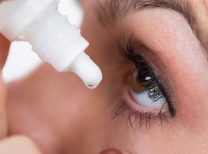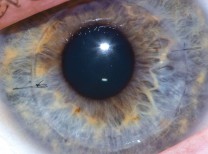As a certified telemedicine diabetic reader, I participate in a program that is run through UC Berkeley called Eyepacs, a web-based non-proprietary application for exchanging eye-related clinical information. The bulk of Eyepacs communications involves bringing diabetic retinal assessments into the primary care physicians’ offices.
The program works without regard to physical location, is validated, and is growing exponentially along with the number of diabetics. On this particular morning I am reviewing images from diabetic patients living in Mexico.
Diabetes is a worldwide epidemic projected to grow globally from 382 million today to 592 million by the year 2035 – an increase of 55%. About 46% of people with diabetes are undiagnosed and unaware of the long-term damage the disease presents to their bodies.
Along with retinal disease, diabetes presents a host of other potential medical complications including vascular disease (such as peripheral vascular disorders), cerebrovascular disease (brain and cerebral circulation), oral health conditions, heart disease, kidney disease and neuropathy.
According to the American Optometric Association, diabetes is the leading cause of new cases of blindness and low vision among patients 20 to 74 years of age. An estimated 25.8 million Americans have diabetes (8.3% of the population). In 2010, 1.9 million new cases were diagnosed in the population age 20 and up. Based on that trend, one-third, or one in three, adults will have diabetes by 2050.
The most common complication of diabetes is eye disease which affects 70% of those with the condition. In fact between 20-40% of patients with diabetes have retinal disease already present at the time of their original diagnosis. Unfortunately, only about one-half to one-third of diabetics obtain annual dilated retinal exams provided by eye doctors; hence the need for Eyepacs.
Race makes a difference in prevalence. For example, the CDC estimates the prevalence of diagnosed and undiagnosed diabetes for Non-Hispanic blacks to be 18.7% versus 10.2% for same (age 20 and up) population of Non-Hispanic whites.
Once a patient has diabetes, the incidence of eye disease increases with the duration of the condition. Remember, as stated above, that at the time of diagnosis, 20-40% of type 2 diabetics, the most common type, have eye disease. That number grows to 60-80% after 15 years with 20% of those progressing to the most severe form of eye disease called proliferative retinopathy.
If we look at the cost projections for diagnosed diabetes, we see it is growing at an alarming rate. In 2007 it was estimated to be $174 billion and in 2012 it had grown to $245 billion. Based on the growing projections for 2050, it is going to create a staggering financial and social burden on healthcare. With 26 million Americans already having diabetes – and that number is growing – the epidemic is upon us now.
We can all do our part by being more active, eating properly, avoiding smoking and getting routine preventative eye health exams. The earlier we diagnose and intervene in the diabetes disease process, the less the cost and the better the outcomes.
Dr. Evans is the founding owner of Evans Eye Care in Palm Desert and can be reached at (760) 674.8806 or online at www.evanseyecare.com.













































Comments (0)